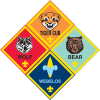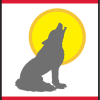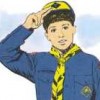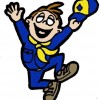Belt Loop
Complete these three requirements
- Talk with members of your family about your family heritage: its history, traditions, and culture.
- Make a poster that shows the origins of your ancestors. Share it with your den or other group.
- Draw a family tree showing members of your family for three generations.
Academics Pin
Earn the Heritages belt loop and complete five of the following requirements.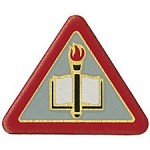
- Participate in a pack heritage celebration in which Cub Scouts give presentations about their family heritage.
- Attend a family reunion.
- With your parent’s or adult partner’s assistance, find and correspond with a pen pal from another country. Find out how his or her heritage is different from yours.
- Learn 20 words in a language other than your native language.
- Interview a grandparent or other family elder about what it was like when he or she was growing up.
- Work with a parent or adult partner to organize family photographs in a photo album.
- Visit a genealogy library and talk with the librarian about how to trace family records. Variation: Access a genealogy Web site and learn how to use it to find out information about ancestors.
- Make an article of clothing, a toy, or a tool that your ancestors used. Show it to your den.
- Help your parent or adult partner prepare one of your family’s traditional food dishes.
- Learn about the origin of your first, middle, or last name. Tell your den or an adult family member about what you learned
Additional Information
A Positive Attitude About Culture
Positive, flexible attitudes toward other people are rooted in strong, positive images of ourselves. Selfassured children are not threatened by differences. They remain open to the new experiences that differences make possible. Self-confident children learn to be skeptical of negative cultural myths about other people. They make up their own minds about people as individuals rather than as members of a stereotypical category.
Encourage and help your child find out about his family history. You will have the opportunity to be part of his adventure as he explores his roots and his heritage. You can help him find family pictures, record family stories told by relatives, and visit libraries, county archives, newspaper files, or cemeteries where family history information might be found.
Help him organize his family story. Help him when he has questions about the customs or traditions of other cultures he encounters in his den or classroom. Help him prepare his family story for exhibit at the pack heritages celebration.
Enjoy the time you spend together. Seeing your family heritage through your child’s eyes can be among the most satisfying things you’ll do.
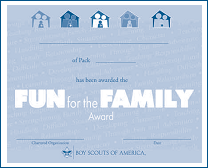 The BSA Family Program
The BSA Family Program
Earning the BSA Family Award is an excellent way to learn more about your family’s heritage. Requirements can be found in the BSA Family Book(No. 33012). Your family can earn a Family Program certificate; Cub Scouts can earn a patch; and family members can earn the BSA Family pin.
Resources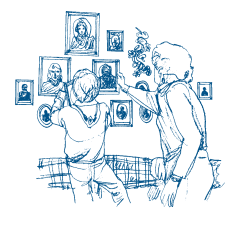
At your local library or schools, look for books about different cultures, including nonfiction and books of stories from other lands.
Visit local cultural and historical museums and centers. Invite guests from other cultures to visit your den and talk with the boys about their heritage.
Boy’s Lifemagazine can also be an excellent source of information and stories about other cultures.

